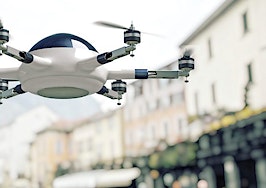- It’s important for real estate professionals to be aware of and sensitive to the issues in drone usage.
- I think that just like the horse and buggy replacing cars, regular commercial drone use will eventually be widely accepted.
- Property owners will likely find protection from drone misuse in already existing laws.
There has been an excited buzz in the air, and it’s not just the sound of more drones taking flight. It’s the buzz of anticipation surrounding the potential technological advances, business efficiency and capabilities that will come from the recently published Small UAS rules (Part 107 of the Federal Aviation Regulations).
The new rule streamlines the use of drones by commercial users and makes it easier to get off the ground with less lead-time (since the 333 exemption is no longer necessary).
How will private property rights be impacted?
If you’ve been waiting on the sidelines to figure out whether you might be able to fly drones for listing photos, construction review, surveying or the like without a pilot’s license, you’ll appreciate the simplicity of the operational rules found in Part 107.
When the new rule becomes effective (in Aug. 2016), most experts expect the use of these devices to proliferate. You can find a summary of the rule here.
With all the possibilities of low-cost and technologically simple aerial photography, videography, site inspections, surveillance and monitoring, construction and development progress review, insurance estimates of roof damage, agricultural applications and more, this means a giant leap forward for humankind, right? Not so fast.
Innovation is often fraught with haters
When the automobile began to replace the horse and buggy, not everyone embraced the technology. When commercial air travel became common, not everyone appreciated giant mechanical birds in the sky. When cell towers and wind turbines began to appear within a serene landscape, eyebrows were raised.
[Tweet “When the car began to replace the horse and buggy, not all embraced the technology.”]
So, too, I predict it will be with commercial use of drones. The “not in my backyard” phenomenon gathers steam in many instances in which technology has advanced beyond an individual’s comfort.
Envision that a retailer or courier service begins replacing delivery trucks and bike messengers with drones. Envision the listing photos you’re proudly taking to showcase a property are perceived as spying, trespassing or a violation of privacy by the neighbor who is gardening in her backyard.
The cons of commercial drones
Consider that while your kids are playing in the park, a drone that is doing a visual inspection of a neighboring construction site appears to have its camera tilted toward the kids on the swing set. The potential positive and productive use of drones is unquestionable and seemingly limitless — so too are the potential areas for misuse or concern.
Why should real estate professionals, property managers, developers and real estate trade associations care? You might find that your clients want you to use drones or your competition has begun using it.
Your past or future clients might ask what you think of the technology and whether their property is protected from the interference of a drone flying overhead. Associations might find the media or elected officials within their communities turn to a real estate trade association for input on how drones and private property rights intersect.
It’s important to recognize that laws regarding privacy, trespassing and nuisance already govern some of the conduct concerned property owners might wonder about.
If a neighbor shines bright lights into the adjacent property owner’s home at night, that’s quite likely a nuisance. If you were to camp out on your neighbor’s front lawn without permission, that’s a trespass. So it’s at least conceivable that property owners will find some protection from unreasonable use or interference of drones through existing theories of law.
[Tweet “Property owners will likely find protection from drone misuse in already existing laws.”]
Questions still remain
However, the questions that are not currently resolved are — where, when and how low may a flight be when that flight is in, around or near private property?
The FAA has set a ceiling for drone flights, at 400 feet, but it has not set a floor. So if you were to fly a drone 20 feet off the ground, on a public road and within 20 feet of a private home, is it an invasion of privacy or a nuisance?
Although the FAA set forth a great deal of guidelines in Part 107, it’s certainly not possible for it to resolve each and every conceivable question or issue regarding private property rights. However, it certainly considered privacy issues. In its announcement of Part 107, the FAA stated:
Although the new rule does not specifically deal with privacy issues in the use of drones, and the FAA does not regulate how UAS gather data on people or property, the FAA is acting to address privacy considerations in this area.
As has been the case throughout history, property rights are defined by use and the evolution of laws that result from changing, competing or conflicting uses.
We’re currently at a new intersection in the world of real estate. The path of drones and technological development for flights involving an airborne device of 55 pounds or less has just crossed the path of private and public property rights.
Although we don’t yet know exactly how or when the conflicting or overlapping rights might impact private property rights, it’s important for real estate professionals to be aware of and sensitive to the issues.
At a minimum, flights near or around private property that is not owned by the pilot of the drone or the person who has contracted for the flight ought to be done with sensitivity and deference to property rights, privacy and sensibilities of neighboring property owners.
[Tweet “It’s crucial for real estate professionals to be sensitive to the issues in drone usage.”]
Brad Boyd is an attorney with the Fafinski Mark & Johnson law firm in Eden Prairie, Minnesota. You can follow him on Twitter or on LinkedIn.




